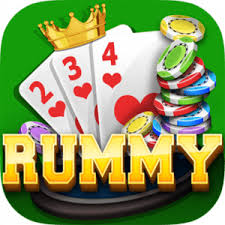What is Rummy, Rummy is a timeless card game enjoyed by millions around the world. With its roots tracing back to the early 19th century, rummy has evolved into a popular and versatile game that blends skill, strategy, and a bit of luck. This article provides a comprehensive overview of rummy, including its history, basic rules, variations, and tips for playing.
History of Rummy
Rummy’s origins are somewhat murky, but it is widely believed that the game evolved from the Mexican game of “Concentration” and the Chinese game of “Mahjong.” The game gained popularity in the United States in the early 20th century and spread to other parts of the world, leading to the development of numerous variations. Rummy’s enduring appeal can be attributed to its simple rules and the strategic depth it offers.
Basic Rules of Rummy
While there are many variations of rummy, the fundamental rules remain consistent. Here’s a basic outline of how the game is typically played:
- Objective:
- The primary goal of rummy is to form valid sets and sequences of cards. A set consists of three or four cards of the same rank but different suits, while a sequence (or run) consists of three or more consecutive cards of the same suit.
- Number of Players:
- Rummy is usually played by 2 to 6 players. Each player is dealt a hand of cards, with the remaining cards forming the draw pile.
- Gameplay:
- Dealing: Each player is dealt a certain number of cards (usually 10 cards for 2 players, or 7 cards for more than 2 players). The rest of the deck is placed face down as the draw pile, and the top card is placed face up to start the discard pile.
- Turn Sequence: Players take turns in a clockwise direction. On each turn, a player draws a card from either the draw pile or the discard pile and then discards a card from their hand.
- Melding: The objective is to form valid sets and sequences. Once a player has completed their hand with valid combinations, they can “meld” their cards to declare their hand and end the game.
- Winning the Game:
- A player wins the game by forming valid sets and sequences with all their cards and declaring their hand. The other players then reveal their cards, and points are tallied based on the cards remaining in their hands. The game can be played in rounds, with the winner being the player with the lowest score or highest points after a predetermined number of rounds.
Popular Variations of Rummy
- Indian Rummy:
- Rules: Indian Rummy typically involves two decks of cards and requires players to form two sequences (one of which must be pure) and two or more sets.
- Gameplay: Players draw and discard cards to form valid combinations and declare their hand when all cards are melded.
- Gin Rummy:
- Rules: Played with a single deck of cards, Gin Rummy requires players to form sets and runs. The game is typically played between two players.
- Gameplay: Players aim to form their hands into valid combinations and can knock or go gin to end the game.
- Kalooki (Kaluki):
- Rules: Kalooki is a variation that often involves two decks and requires players to form valid sets and runs. The game can be played with 2 to 6 players.
- Gameplay: Players aim to form sets and runs, with specific rules for declaring and scoring.
- Canasta:
- Rules: Canasta is a variant of rummy played with two decks of cards and involves forming melds of seven or more cards.
- Gameplay: Players aim to form canastas (melds of seven cards of the same rank) and score points based on their combinations.
- Oklahoma Rummy:
- Rules: A variation of Gin Rummy with unique rules for knocking and scoring.
- Gameplay: Players draw and discard cards to form valid combinations and aim for specific point thresholds to end the game.
Tips for Playing Rummy
- Understand the Rules:
- Familiarize yourself with the specific rules of the rummy variation you are playing. Each variant may have unique rules and strategies.
- Practice Strategic Discarding:
- Pay attention to the cards you discard and the ones your opponents pick up. Avoid discarding cards that could help your opponents form valid sets or runs.
- Focus on Sequences:
- Prioritize forming sequences (runs) early in the game. Sequences are often easier to complete and may offer more flexibility compared to sets.
- Observe Opponents:
- Keep track of the cards your opponents pick up and discard. This information can provide insights into their strategies and help you make better decisions.
- Manage Your Hand:
- Keep your hand organized and avoid holding onto high-point cards for too long. If you’re close to forming valid combinations, focus on completing them quickly.
- Plan Your Moves:
- Think ahead and plan your moves carefully. Consider both your own hand and the potential moves of your opponents.
Conclusion
Rummy is a captivating card game that combines skill, strategy, and luck, making it a favorite among players of all ages. With its rich history and various popular variants, rummy offers endless opportunities for enjoyment and challenge. Whether you’re playing casually with friends or participating in competitive tournaments, understanding the basic rules and strategies can enhance your gameplay and overall experience. Dive into the world of rummy today and discover why this classic game continues to capture the hearts of players around the globe.




